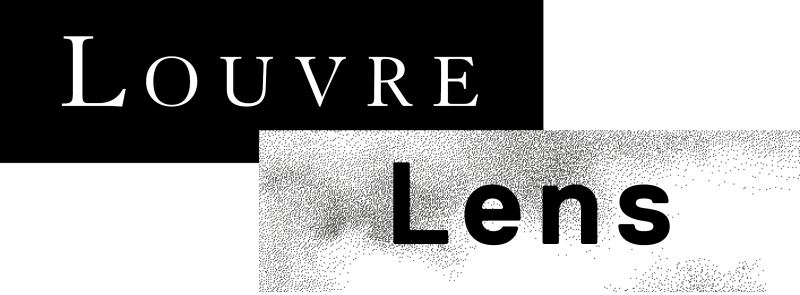This website uses cookies so that we can provide you with the best user experience possible. Cookie information is stored in your browser and performs functions such as recognising you when you return to our website and helping our team to understand which sections of the website you find most interesting and useful.
KASIMIR ZGORECKI
Photographing « Little Poland » 1924-1939
Free admission !
Echoing the Poland exhibition, the Louvre-Lens is presenting an exhibition devoted to the photographer Kasimir Zgorecki (1904–1980) in the Glass Pavilion. Zgorecki set out to showcase the lives of Polish émigré workers in the mining region of northern France in the early 20th century.
In September 1919, following the signing of an agreement between France and Poland, numerous Polish workers arrived in the mining region in northern France. Kasimir Zgorecki was part of the Polish diaspora. In 1922, he left the Ruhr where his father worked as a miner, and settled in Rouvroy in the Pas-de-Calais. A boilermaker by training, he only worked in the mines for six months, before becoming a professional photographer. In 1924, he took over his brother-in-law’s workshop and bookshop, and the latter taught him the rudiments of the medium.
During the inter-war period, Kasimir Zgorecki’s activity flourished. He took portraits of Polish émigrés who had left their country far behind, immortalising their personal success, making their personal stories and personalities tangible, and revealing their everyday lives. His work, which is simultaneously sensitive, simple and touching, and was the product of impeccable technique, has been rediscovered over the past twenty years.
The exhibition features around twenty black and white photographs, most of which are new prints made for the exhibition. They bear witness to life in this émigré Polish community, whose members were keen to demonstrate their ability to integrate and succeed, and their commitment to keeping alive its traditions. They also demonstrate the photographer’s originality.
EXHIBITION LAYOUT
From mining to photography
Kasimir Zgorecki developed his technique by using himself as a model. In these self-portraits, which were a form of experimentation for him, he played roles inspired by painting,
cinema and theatre, using costume and props. From the painter in his studio to the muscular young man posing with naked torso, these self-portraits provide a glimpse of their creator’s original personality, while blurring his identity.
Identity photographs : an administrative requirement
Initially, Zgorecki’s work had a specific administrative purpose: following the decree of 2 April 1917, every foreigner over the age of 15 who stayed for more than 15 days in France was required to have an identity card with a photograph. Zgorecki’s photographic work was rooted in part in this administrative context. Men and women of various ages were photographed from the front or the side against a relatively neutral background. Intended to focus on the face alone, these images offer a contrast between the subjects’ neutral expressions, as required by bureaucracy, and their body posture and clothing, which were freer. It was not unusual for two people to be combined in a single image in order to economise on glass plates.
Staging life
Kasimir Zgorecki’s photographs capture the history of Polish immigration through anonymous figures and moments from life captured on glass plates. Commissioned portraits were an
important part of his work. From baby to elderly woman, and from families and brothers and sisters to groups of friends: the images that have come down to us feature a broad spectrum of the Polish community. For this exceptional session with the photographer, sitters wore smart outfits and had accessories that
presented them in a good light.
The photographs taken in or in front of shops, featuring people in their finery and well-stocked windows and interiors, were visual markers of social success. The names – grocery, butcher, tailor –indicate the professions of their proud owners. These images were intended to project the success – real or fake – of Polish émigrés in
France, and at the same time nourished the myth of integration, glossing over the difficulties encountered by foreign workers.
Post-mortem photography, which has existed since the 19th century, became more widespread in Kasimir Zgorecki’s time. The striking images displayed here for the most part show dead
children, who look as though they have just fallen asleep or are smiling as if still alive. They were taken to bear witness to both the child’s death and their brief existence. They played a vital
role in the mourning process, illustrating three ritual moments: the display of the body, the funeral mass and inhumation. In the context of emigration, these photographs also made it possible to send a souvenir of these children to the family that had stayed behind in Poland.
Capturing “Little Poland”
Zgorecki was a witness to his time. He visited the mining towns by bicycle, carrying his large-format camera and tripod with him. In these towns, a ‘Little Poland’ was created where particular traditions survived. Zgorecki would take portraits of families in front of their homes, which were the key focal point of life in the community. These images convey a simple life in which people diligently tended their gardens and looked after their houses.
Away from the artifice of the studio backdrops, and despite their very posed and carefully composed character, they reveal Poles in their everyday lives.
Religious and folk celebrations, wedding ceremonies and bachelor parties all provided the Polish community with opportunities
to come together. Zgorecki frequently photographed public celebrations and leisure activities. His photographs sometimes
capture these moments of joy with great freedom, with natural poses, comic effects in the staging of the pictures and the addition of humorous comments on
the glass plate. Wedding photographs were commissioned works that captured an important moment, codifying a beautiful image that could be kept and sent
to the homeland.
In the 1920s and 1930s, sport played an important role in maintaining social cohesion. The Poles imported from the Slavic countries sokol or sokół, a movement combining sporting activity and moral education that emerged in the Czech region in the 19th century. They practised a form of gymnastics involving particularly photogenic group exercises. The photographs also feature men’s and women’s football teams – like swimming, this sport was becoming increasingly popular at the time. Zgorecki photographed these moments with tenderness and compassion, creating images that reveal a community that was keen to demonstrate its ability to integrate while also keeping its traditions alive.
Curators :
Marie Lavandier, director of the Louvre-Lens and Caroline Tureck, head of research at the Louvre-Lens
In partnership with the CRP/ Centre régional de la photographie Hauts-de-France


